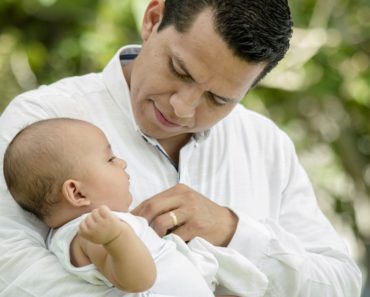Contents
- 1 Subtitle: Navigating Couples Therapy: Essential Tips for Stepparents
- 2 Understanding the Unique Dynamics of Stepparenting
- 3 Addressing Co-Parenting Issues in Couples Therapy
- 4 Building a Strong Foundation for Your Blended Family
- 4.1 How can stepparents effectively communicate their concerns and challenges to their partner during couples therapy?
- 4.2 What strategies or techniques can stepparents utilize to navigate the unique dynamics and complexities of blended families during therapy sessions?
- 4.3 How can couples therapy help stepparents develop stronger bonds with their stepchildren and establish a harmonious co-parenting relationship with their partner? Please note that these questions are tailored specifically to the topic of couples therapy and being prepared as a stepparent, and they should be used as a guide for further exploration and research.
- 4.4 Related Posts

Are you and your partner considering couples therapy as a stepfamily? Knowing how to be prepared can make a significant difference. In this article, we’ll provide you with practical tips and strategies to navigate the journey of couples therapy in a stepfamily dynamic. Get ready to enhance your relationship and strengthen your blended family bonds.
Navigating Couples Therapy: Essential Tips for Stepparents
Subtitle: Stepparent
When it comes to being a stepparent, navigating couples therapy can present unique challenges. Stepparenting requires balancing the needs of the children and the dynamics between the biological parents and the new partner. Here are some essential tips for stepparents embarking on the journey of couples therapy:
1. Establish Open Communication: Communication is crucial in any relationship, but even more so in a blended family dynamic. Make sure you and your partner have open and honest conversations about your expectations, concerns, and goals for therapy. It’s important to create a safe space where everyone can express themselves without judgment.
2. Recognize Boundaries: Stepparents often face challenges when it comes to establishing their role within the family. It’s essential to discuss boundaries with your partner and align on how you will navigate discipline, decision-making, and involvement in the children’s lives. Respect the boundaries set by the biological parent while actively participating in the family dynamics.
3. Seek Professional Help: Couples therapy can be immensely beneficial for stepparents, as it provides a neutral space to address issues and work towards solutions. Look for a therapist who specializes in blended families or has experience working with stepparents. They can help facilitate communication, provide guidance, and offer strategies to navigate the complexities of stepfamily life.
4. Practice Empathy: Understand that everyone involved, including the children, may be going through their own challenges and emotions. As a stepparent, it’s important to practice empathy and be patient with the process. Take the time to understand the unique perspectives of each family member and work towards finding common ground.
5. Foster a Positive Relationship: Building a positive relationship with the children is crucial for stepparents. Engage in activities that help develop a bond and create shared experiences. Showing affection, respect, and support for the children can help foster a sense of trust and security within the family.
Remember, couples therapy is not a quick fix, but rather a journey towards strengthening your relationship and improving the dynamics within the blended family. With patience, understanding, and professional guidance, stepparents can navigate the challenges and build a harmonious family unit.
Tags: stepparenting, couples therapy, blended family, communication, boundaries, professional help, empathy, positive relationship.
Understanding the Unique Dynamics of Stepparenting
Stepparenting comes with its own set of challenges and complexities. In this section, we will explore the unique dynamics of stepparenting and how it affects couples therapy.
As a stepparent, it is crucial to understand the different roles and responsibilities you have in the blended family. This includes balancing being a supportive partner to your spouse while also navigating the relationships with stepchildren. It is important to recognize and address any potential conflicts or resentments that may arise.
Additionally, stepparents often face difficulties in establishing authority and building trust with stepchildren. Effective communication strategies and clear boundaries are essential in creating a harmonious family environment. Couples therapy can provide a safe space to explore and resolve these challenges, allowing you and your partner to establish a solid foundation for your blended family.
Addressing Co-Parenting Issues in Couples Therapy
Co-parenting can be a significant source of stress and tension for stepparents. In this section, we will discuss how couples therapy can help in addressing co-parenting issues within the context of stepparenting.
Co-parenting dynamics can vary greatly, especially when biological parents are still involved. Couples therapy offers a platform to openly discuss and negotiate co-parenting strategies with your partner. Therapy can help you develop effective co-parenting skills, including conflict resolution, decision-making, and maintaining consistent parenting approaches across households.
Furthermore, couples therapy can facilitate conversations about expectations, roles, and boundaries with ex-spouses or biological parents. By addressing co-parenting challenges, you can create a more unified approach to parenting, resulting in better outcomes for the children involved.
Building a Strong Foundation for Your Blended Family
Successfully blending families requires effort, understanding, and collaboration. In this section, we will explore how couples therapy can assist in building a strong foundation for your blended family as a stepparent.
Couples therapy offers a supportive environment where you and your partner can openly discuss your individual expectations, fears, and concerns about the blended family. Therapy can help you navigate the complexities of stepfamily dynamics and identify strategies for fostering healthy relationships.
Moreover, couples therapy can assist in exploring effective parenting techniques, conflict resolution skills, and establishing a united front as co-parents. By strengthening your bond as a couple, you can create a secure and stable environment for all family members, including stepchildren. Through therapy, you can develop strategies to prioritize self-care, manage stress, and cultivate a positive family dynamic that promotes growth and happiness.
How can stepparents effectively communicate their concerns and challenges to their partner during couples therapy?
Communicating concerns and challenges effectively in couples therapy as a stepparent is crucial for fostering understanding and resolving issues within the blended family. Here are some tips to help stepparents communicate effectively with their partners during therapy:
1. Be clear and specific: When discussing concerns or challenges, be specific about the issue at hand rather than making broad statements. Clearly express what troubles you and provide examples to help your partner understand the situation.
2. Use “I” statements: Instead of using accusatory language, focus on expressing your feelings and thoughts using “I” statements. This approach helps avoid blame and encourages open dialogue. For example, say, “I feel overwhelmed when I’m not included in making important decisions about the children.”
3. Active listening: Engage in active listening by giving your full attention to your partner’s perspective. Repeat back what you heard to ensure understanding, and ask questions or seek clarification when necessary.
4. Show empathy: Validate your partner’s feelings and experiences, even if they differ from yours. Empathy helps create a supportive atmosphere where both partners can openly discuss their concerns and work towards solutions together.
5. Focus on solutions: While it’s essential to express concerns, keep the conversation focused on finding solutions rather than dwelling on the problems. Brainstorm together and collaborate on strategies that address the challenges faced by the stepparent.
6. Respect boundaries: Recognize and respect each other’s boundaries. Stepparenting can be a complex and sensitive role, so it’s important to have ongoing conversations about expectations, responsibilities, and limits.
7. Seek professional guidance: If communication difficulties persist, don’t hesitate to involve a couples therapist who specializes in blended families. A therapist can provide valuable guidance and facilitate productive conversations between stepparents and their partners.
Remember, effective communication requires patience, understanding, and a willingness to work through challenges together.
Stepparents can employ several strategies to effectively navigate the complexities of blended families during therapy sessions:
1. Active listening: Actively listening to all parties involved in the blended family, including biological parents, stepchildren, and other family members, is crucial. Stepparents should strive to understand different perspectives, feelings, and concerns.
2. Building trust: Stepparents should focus on building trust with their stepchildren by demonstrating consistency, respect, and genuine care. Consistently following through with promises and being present in their lives can foster a sense of trust and security.
3. Respecting boundaries: Recognizing and respecting boundaries is essential in blended families. Stepparents should communicate openly with biological parents and stepchildren about individual boundaries and work collaboratively to establish shared boundaries.
4. Seeking support: Blended families often face unique challenges, and stepparents can benefit from seeking support from therapists or support groups specializing in blended families. These resources provide a safe space to share experiences, gain insights, and learn effective coping strategies.
5. Co-parenting communication: Stepparents should foster strong communication with biological parents to ensure consistent parenting approaches. Open and respectful communication can help avoid conflicts and maintain a unified front in parenting decisions.
6. Recognizing individual roles: Stepparents should understand and accept that they may have distinct roles within the blended family. They should work towards developing a positive relationship with stepchildren while respecting the authority and primary role of the biological parent.
7. Modeling healthy relationships: Stepparents can model healthy relationships by demonstrating empathy, conflict resolution skills, and effective communication. This can positively influence the dynamics within the blended family and provide a blueprint for healthy relationships.
8. Patience and empathy: Navigating blended family dynamics can be challenging, and it requires patience and empathy. Stepparents should strive to understand that adjustment and building strong relationships take time, and setbacks are normal.
By employing these strategies, stepparents can navigate the complexities of blended families more effectively and create a harmonious environment during therapy sessions.
How can couples therapy help stepparents develop stronger bonds with their stepchildren and establish a harmonious co-parenting relationship with their partner?
Please note that these questions are tailored specifically to the topic of couples therapy and being prepared as a stepparent, and they should be used as a guide for further exploration and research.
Couples therapy can be a valuable tool for stepparents looking to develop stronger bonds with their stepchildren and establish a harmonious co-parenting relationship with their partner. Here are a few ways in which couples therapy can help in this process:
1. Communication skills: Couples therapy provides a safe and structured environment for partners to learn effective communication skills. Stepparents can express their feelings, concerns, and challenges they face in their role, while biological parents can openly share their expectations and concerns. By improving communication, stepparents and their partners can work together to find solutions and create a cohesive parenting plan.
2. Managing conflicts: Stepparents often encounter conflicts with their stepchildren or differences in parenting styles with their partners. Through therapy, couples can learn strategies to manage conflicts and find compromise. Therapists can offer guidance on how to navigate disagreements and help stepparents understand the unique dynamics within blended families.
3. Building trust and understanding: Stepparents may struggle with building trust and establishing a solid foundation with their stepchildren. Couples therapy can provide a space for the stepparent and their partner to discuss their concerns, fears, and past experiences that may impact their relationships. By exploring these underlying issues, stepparents can gain a better understanding of themselves and their stepchildren, promoting empathy and trust.
4. Defining roles and boundaries: Couples therapy offers an opportunity to discuss and negotiate roles and boundaries within the blended family. Stepparents and biological parents can clarify their expectations, set boundaries, and define their responsibilities in co-parenting the children. This helps establish clear guidelines and reduce conflicts related to parenting roles.
5. Strengthening the couple’s relationship: A strong partnership between the stepparent and their partner is crucial for successful co-parenting. Couples therapy can focus on strengthening the bond between partners, as a solid foundation will positively impact the stepparent-stepchild relationship. Therapy can address any underlying issues in the couple’s relationship and enhance their overall connection.
Remember, each blended family is unique, and the specific challenges faced by stepparents can vary. Therefore, it’s important to consult with a professional couples therapist who has experience working with blended families to tailor the therapy sessions to your specific needs.
In conclusion, couples therapy can be a valuable tool for stepparents seeking to navigate the complexities of blended families. By being prepared for therapy sessions, stepparents can enhance their communication skills, build stronger relationships with their partners and stepchildren, and ultimately create a harmonious and loving home environment. Remember, therapy requires commitment and open-mindedness, but the rewards are well worth the effort. With professional guidance and a willingness to work together, stepparents can overcome challenges and create a thriving and blended family dynamic.







